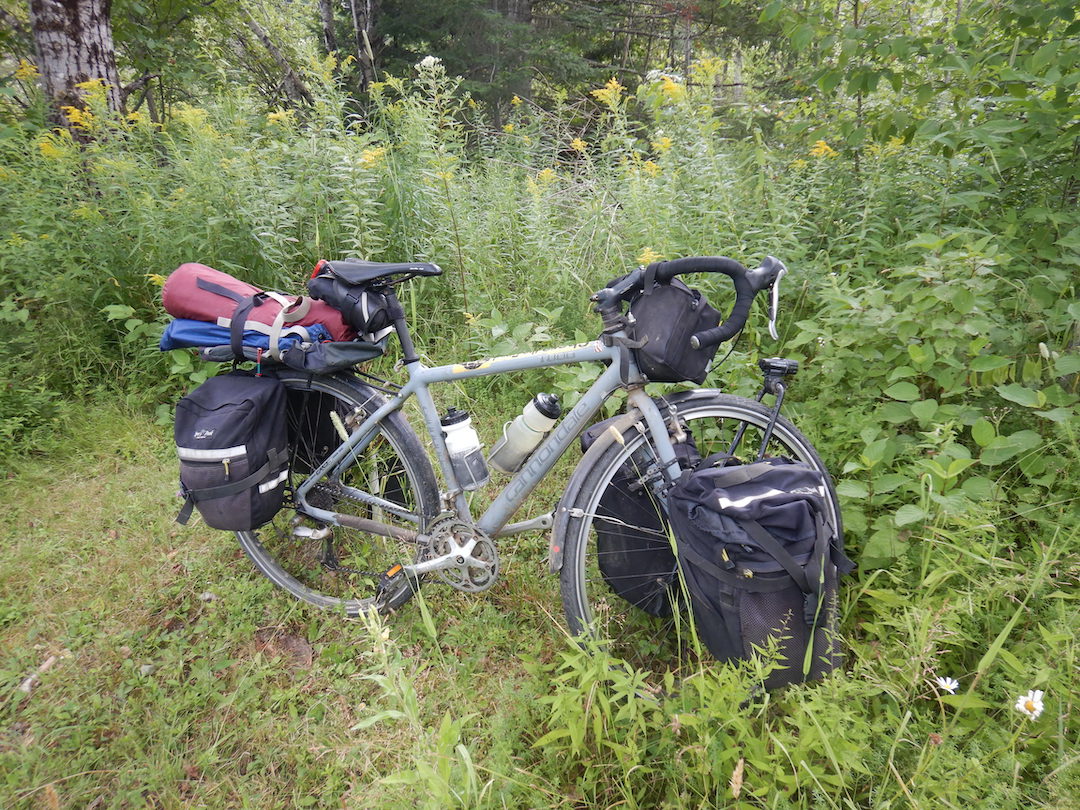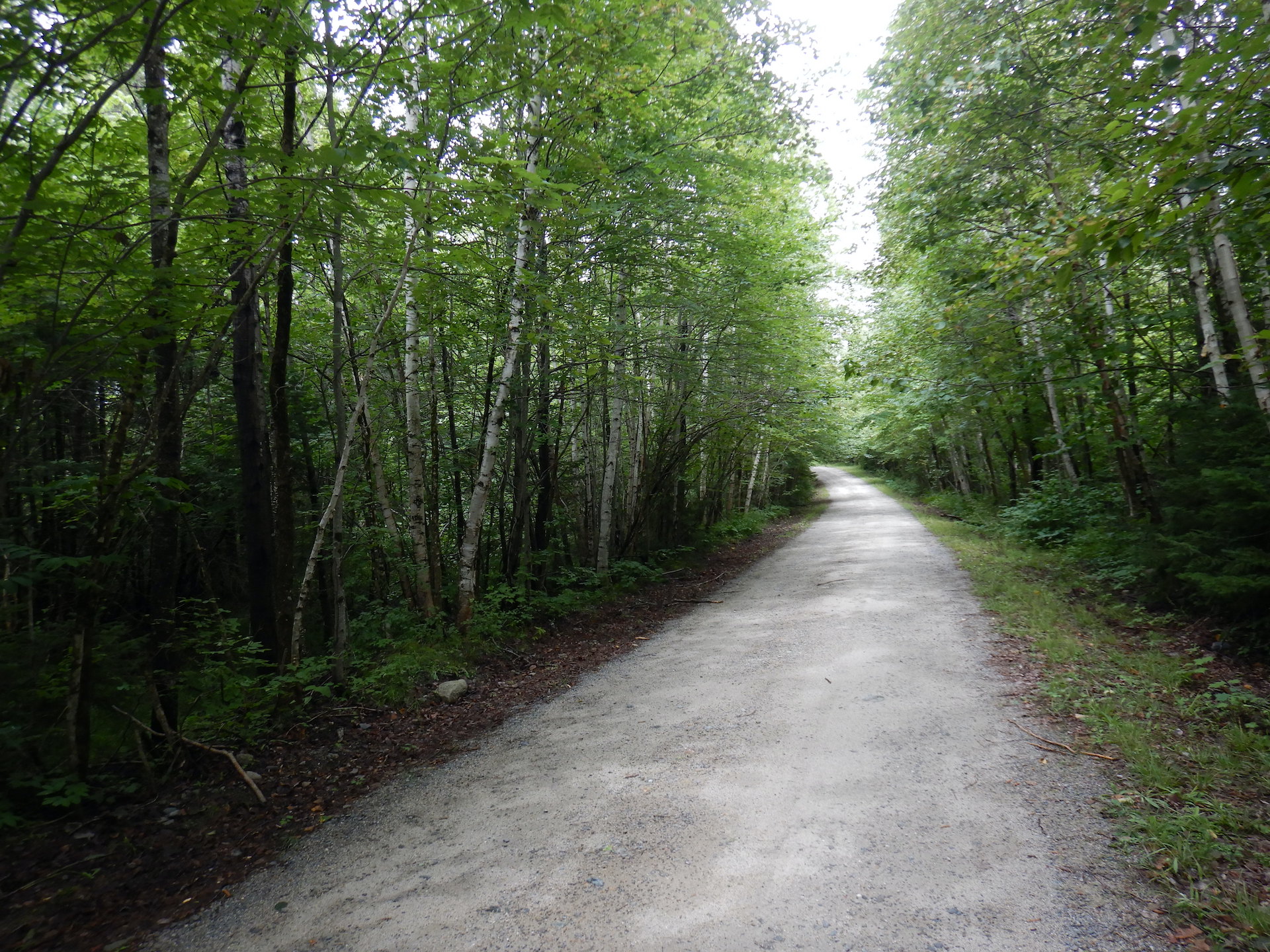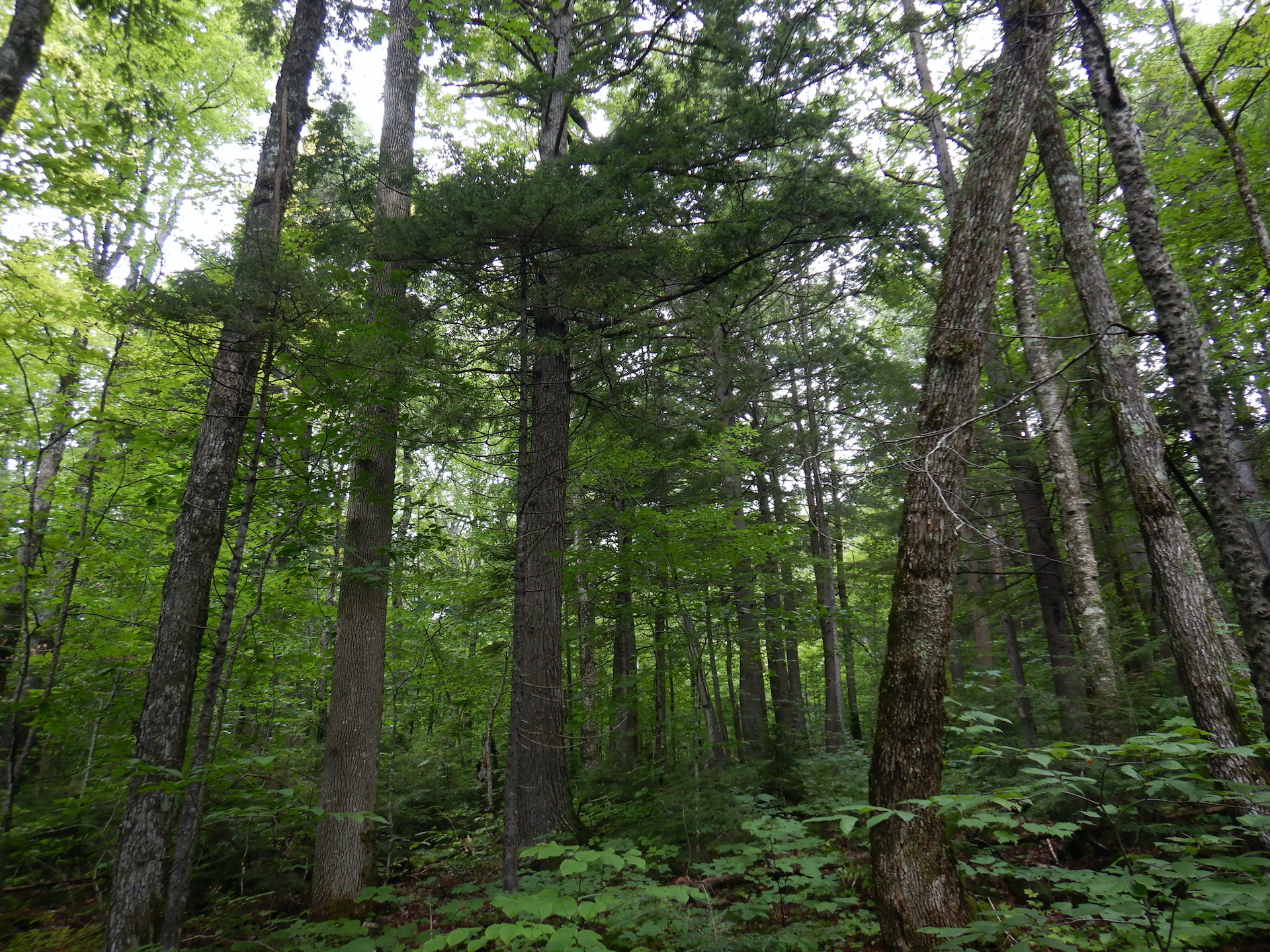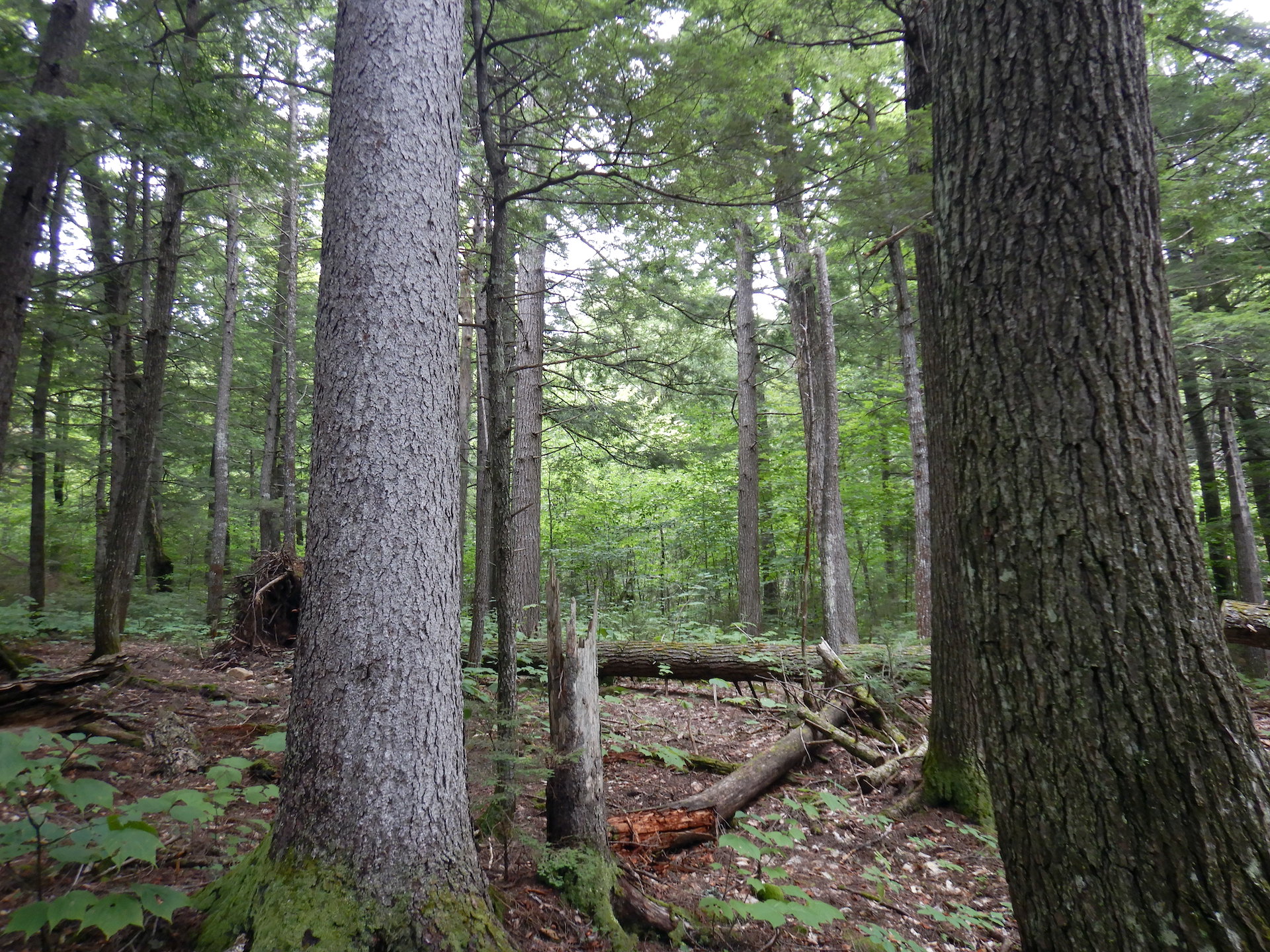Last August, I disappeared for a much anticipated week of bicycling, camping, and hiking. I hadn’t taken a bicycle trip longer than three nights in far too long, so it felt good to get back on Rocinante and pedal away from home with no phone or internet to distract me. Despite nagging high humidity and some heavy rain during the middle of the trip, it was a blissful time when I disconnected from everything but the immediate world around me (a privilege, yes I realize, but one I’ve worked to maintain).
In total, I didn’t ride my bike all that much. It was about 140 miles, so a reasonable fit person could cover my route in two days—and a younger version of me would’ve felt antsy when taking so much time to cover so little distance, but the point wasn’t to move quickly. Instead, I sought experiences best gathered through careful observation. Each day offered new discoveries, even if they were within the confines of the familiarity that accompanies travel near your home turf. Toward the end of the trip, for example, a day-long hike showcased groves of trees that had experienced a great deal of change, and offered a chance to consider how they might change in the near future.

Starting near Patten on a Friday afternoon, I headed west to the Matagamon Gate at the northeast corner of Baxter State Park where, long story short, I spent the next four nights. After a fifth night of camping closer to the small town of Millinocket and resupplying on food, I made my way north into Katahdin Woods and Waters National Monument.
I spent the remainder of my trip at Esker Camp in the national monument. On my next to last day, I ventured to the top of Deasey Mountain, one of the highest points in the park, on the International Appalachian Trail (IAT). While many hikers see the mountaintop and its historic fire lookout as the highlight, I find myself still thinking of the mountain’s trees.
Maine’s modern history is intertwined with logging. A lot of trees and a lot of water to transport logs and power sawmills made the state ideal for this industry. In the 1800s, Bangor earned a reputation as the lumber capital of the world. Lumberers looked first for the tall, straight-boled white pines that were so valuable for ship masts. When Henry David Thoreau journeyed to the Katahdin region in the late 1850s, he could not find a mature standing white pine. Trees for lumber were the next to go. Then once the paper-making industry arrived, almost every tree more than a foot in diameter at its base was on the market. Harvest rates increased through much of the 1900s until the paper industry began to decline and eventually collapsed in the state.
The timber industry isn’t what it used to be in Maine, but harvesting of trees remains heavy, and anything more than a quick glance on a drive in northern Maine reveals there’s a wide variety in logging strategies depending on the landowner’s wants and the harvest company’s practices. Overall though, most of the forests you’ll see in Maine are relatively young. In a lot of the cuts I’ve visited at random, many trees are harvested at the tender age of 50 years old and sometimes younger. The national monument’s forests are no exception. On satellite images, the landscape is a checkerboard of logging roads, many of which were blazed in the last 60 years to truck out logs.


Deasey Mountain’s modest height (1,942 feet in elevation) and its proximity to Wassataquoik Stream and the East Branch of Penobscot River—major river drive watersheds before road building reached the area’s forests—made its trees a prime target for logging crews. Dozens of dams, including one not far upstream of Esker Camp, were built in the Wassataquoik and East Branch watersheds to facilitate the river drives. Large, human-caused fires had also burned through the area in the late 1800s and early 1900s. With so much recent disturbance I expected to hike through a regenerating forest for most if not the whole way to the summit.
The first task was to ford Wassataquoik Stream at the IAT crossing, which was straightforward due to the river’s knee-deep water that day. After leaving the Wassataquoik’s immediate floodplain the IAT utilized an old road for a brief clip that roughly followed the route used by some of the first Katahdin climbers, then ox teams in early logging efforts, then the heavy equipment of 20th century industrial logging. On the old road north from the Wassataquoik I walked through relatively young, even-aged trees.


But to my surprise, the forest immediately changed after the trail left the old roads. Instead of spindly, closely spaced trees, i was surrounded by groves of large eastern hemlocks with plenty of big sugar maple, white ash, and spruce. Although the views from the mountain summit I experienced later that day were enjoyable, it was this section of forest which most captured my attention and curiosity.

Now, these weren’t the largest trees I’ve ever seen and if you’re used to hiking through the old-growth forests of the Cascades in Washington and Oregon or the Smokies of North Carolina and Tennessee, then I’ll excuse you if you consider these trees to be modest at best. While eastern hemlocks have the potential to live more than 500 hundred years and grow more than 150 feet tall, the natural disturbance regimes in eastern North America coupled with modern logging practices and invasive insects such as hemlock woolly adelgid rarely allow them to reach their maximum age or size.
The pocket of older trees extended along at least a mile of trail. Despite looking, I didn’t find stumps from cut trees or long-abandoned roads or skidder trails, which would have been the obvious signs of harvest in this stand during the last 100 years. I also failed to find charcoaled stumps. By a stroke of luck, this patch of forest did not burn during the large wildfires in the late 1800s and early 1900s. Parts of the Wassataquoik watershed were made near barren after an intense fire in 1903, for example. Short-lived and fast growing trees that fill recently harvested and fire-burned areas such as aspen were also largely absent, which suggests this forest hadn’t seen a major disturbance from an axe, chainsaw, fire, or windstorm in a very long time—at least long enough for the relatively slow growing hemlocks to mature to their current stature.


I would be surprised if this pocket of forest had not experienced at least some harvest in the last 200 years. Before the modern era of roads and feller bunchers (machines that cut, trim, and stack trees), loggers used sluiceways, ox and horse teams, and sometimes Lombard Steam Haulers to transport timber to places where the logs could be left until the river drives of spring thaw. Even the headwaters of the Wassataquoik watershed, now occupying the wildest portions of Baxter State Park, saw intense logging in the late 1800s.
Although I couldn’t find evidence of recent logging and there’s no recorded history of agriculture on the mountain, I suspect this section of forest isn’t old growth, at least not yet. The definition of old growth remains a subject of debate among scientists, yet most seem to agree that old growth forests are complex. Rather than even-aged trees, old growth stands in the northeastern U.S. contain a wide spectrum of tree ages and sizes. Certainly they often contain very large trees but also lots of dead wood. The canopy is complex with trees of different heights and broken tops. If browsing by deer and moose isn’t too intense, the understory is filled with a diversity of shrubs, small trees, and ephemeral herbs.
Other than the large trees, I saw only modest representations of these features on Deasey. Large dead trees, either standing or on the ground, were not common (although there were some thrilling examples of standing dead snags), and the understory was thin in some places. Sometimes this is the result of heavy deer and moose browse, but here I wondered if it was more of the product of the deep shade cast by the hemlocks and spruce. When storms and insects cull the live trees the subsequent gaps flood the forest floor with light, which allows the shade suppressed plants to burst upward.
With much of Katahdin Woods and Waters in stages of early succession after 20th and early 21st century logging and fires, it’ll be many decades before large areas of the national monument’s forests grow into anything that partially resembles the structure they held before industry arrived in the region. Even then, it won’t be the same as before. Ignoring the fact that North America no longer harbors its large Pleistocene mammals which exerted great influence on plants, and the losses associated with Indigenous forestry across most of the landscape, such as burning which maintained open woodlands and prairies, the disturbance regimes now forced on the land in the last 200 years have created novel forest communities. Many forest types we consider “normal” such as stands of near-continually young birch and aspen have no past analogs.
Beyond that, if people never manipulate this forest through harvest or with fire (purposeful or accidental) again we’ve already set into motion a cascade of effects that will influence the forest for many thousands of years. Introduced disease has ravaged Maine’s American beech—a formerly large, long-lived, shade tolerant tree. Hemlock woolly adelgid and emerald ash borer continue to advance and will likely kill most of the ash and hemlock they encounter. Climate change will make the area less hospitable to spruce, balsam fir, and sugar maple while perhaps improving growing conditions for oaks. Species that live farther south currently such as tulip tree and hickories could become new additions to Maine’s forests as annual temperatures rise. High levels of atmospheric CO2 may accelerate tree growth, but at the same time new diseases, new insect infestations, and increased forest fire potential—all fueled by climate change—are likely to be greater threats to these forests than today. Whatever emerges as a result of these influences will be largely a forest of our own making, whether we want it to be that way or not.
Sometimes I wish I could live long enough to experience the distant future, mostly out of curiosity. I wonder if we have the collective foresight and the will to protect what’s left, to ensure that hemlock and ash trees aren’t reduced to functional extinction like the American chestnut. Could I return in 200 years and find hemlocks on Deasey Mountain? In 500 years?
Welcome, dear trees, to the Anthropocene. It might be a rough ride, but I hope we’ll help you get through it.
I’m glad I’ll be gone by the time we reach peak destruction.
LikeLike
Mike, What a grand surprise to receive this blog entry today. Your bicycle trip sounds wonderful and your observations are astute. Many thanks to you.
LikeLike
Thank you for sharing your observations. I’m a Michigander & am sickened by the logging still happening here. I believe the only Natural Forest left here is Hartwick Pines State Park where it’s been kept safe by laws set up by a lumber barons daughter. He became wealthy destroying our forests. Thankfully his daughter had the foresight to preserves a few hundred acres!
I’ve been to Maine on a Moose Safari ! I enjoyed my drive through the Moosehead Lake area, over to the coast & up to the Bay Of Fundy.
Your stories are always a pleasure to read, and your chats from Brooks Falls are too!
Happy Trails To You
LikeLike
Hi Mike, Always enjoy reading about your adventures and the
knowledge you provide on your posts. I’m glad you had a safe
trip. Enjoy the Maine Fall season. Yankee Man.
LikeLike
Mike, thank you for taking us along on your adventure. Interesting to read about the trees and forestscape. We have much to learn from the trees and their forest cousins. Just as you teach us about the bears and salmon at Katmai. So glad you had a safe trip.
LikeLike